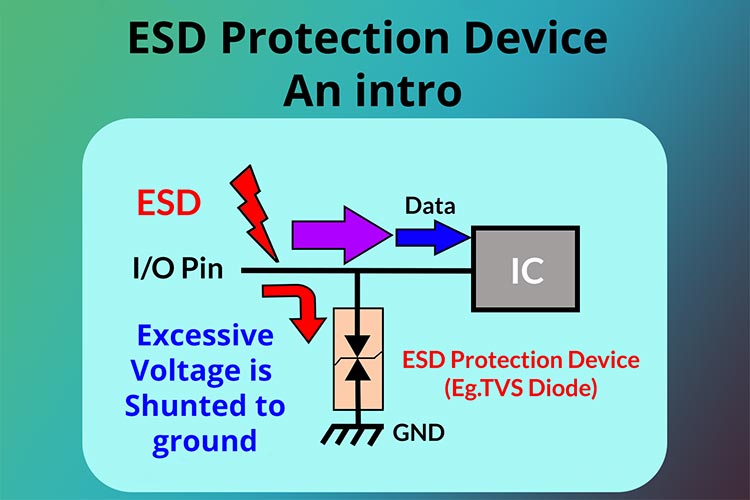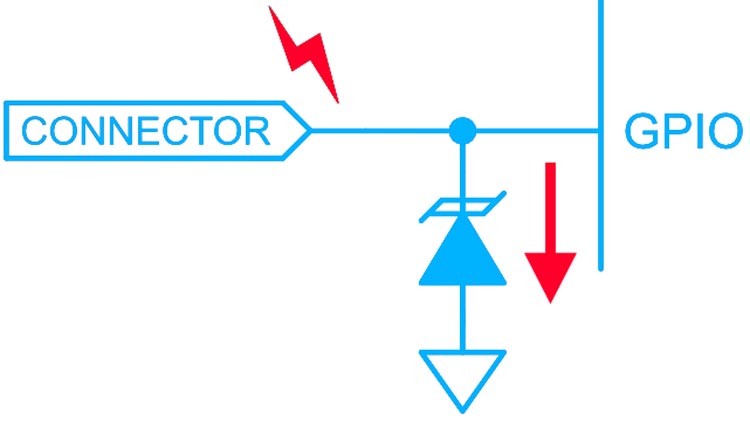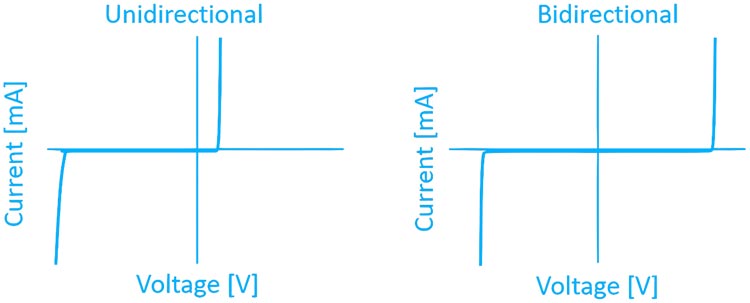Arduino UNO Q bridges high-performance computing with real-time control.
Exploring ESD Protection Devices: An Introductory Guide

Electrostatic Discharge (ESD) refers to the abrupt release of electric charge from one charged object to another upon contact. While many of us have experienced the sensation of ESD when getting shocked by a metal doorknob or car door, such occurrences typically pose minimal risk to humans. However, for delicate integrated circuits (ICs), the substantial peak voltage and current associated with ESD can lead to severe failures. In the absence of ESD protection within a system, a high-voltage ESD strike through an interface connection can result in a substantial surge of current directly flowing into the IC, causing damage.
To safeguard vulnerable circuitry against failures caused by electrical overstress, ESD protection diodes are installed on each signal line between the interface connector and the IC. In the event of an ESD strike, these ESD diodes swiftly break down, establishing a path of low impedance that effectively limits the peak voltage and current by redirecting the current flow towards the ground. In this way, the IC is shielded and protected from potential harm.
ESD Standards
ESD standards are guidelines set by industry organizations to ensure proper design and implementation of ESD protection measures. These standards establish criteria for the maximum allowable ESD levels and provide recommendations for designing ESD protection circuits. Some well-known ESD standards include the International Electrotechnical Commission (IEC) 61000-4-2, JEDEC JESD22-A114, and ANSI/ESD S20.20.
TVS Diodes

Transient Voltage Suppression (TVS) diodes are designed to divert excess voltage away from sensitive components during ESD events. They provide robust protection by clamping the voltage at a safe level and absorbing the excess energy. TVS diodes are typically fast acting and have a low clamping voltage. They can handle large surge currents and are widely used in various electronic devices. There are 2 types of directional configurations in TVS. One is the unidirectional type and the other is the bidirectional type. Use the unidirectional type when the signal is positive and the bidirectional type when both positive and negative signals are applied. We have explained about diodes and their types in detail previously.

ESD Diodes
ESD diodes, also known as ESD suppressor diodes or ESD protection diodes, are designed specifically to protect integrated circuits (ICs) from ESD events. These diodes have a low dynamic resistance and a low capacitance, which allows them to effectively absorb ESD energy without impacting signal integrity. ESD diodes are commonly used in electronic devices to safeguard sensitive ICs, such as microcontrollers, memory chips, and communication interfaces.
Steering Diodes
Steering diodes, also known as steering diode arrays or steering diode networks, are electronic components used in circuitry for voltage and signal routing applications. They are commonly employed in applications where protection against ESD and transient voltage events is necessary. Normally Schottky diodes are used as steering diodes, as they have a lower forward voltage drop of around 0.3V compared to the standard PN junction diode forward voltage drop of 0.7V.

Steering diodes dump the ESD energy into the voltage rails. This can be o.k. in the following conditions:
- ESD energy is low.
- ESD event is short.
- There is some capacitance on your voltage rails (decoupling caps and PSU output capacitors count!).
- The circuits connected to your voltage rail consume a “bit” of power, i.e. are not ultra-low power design circuits which only draw 10uA.
To add further protection, a TVS diode can be added to the voltage rail, to help clamp the voltage if it starts rising along with steering diodes.
Example ESD Protection Circuits
A typical ESD protection circuit consists of a TVS/ESD diode placed in parallel with the protected component or circuit. During an ESD event, the TVS/ESD diode provides a low-impedance path to ground, thus rapidly clamps the voltage, diverting the excess energy away from the protected component. The TVS diode should be chosen based on the maximum clamping voltage and peak pulse current required for the specific application.










